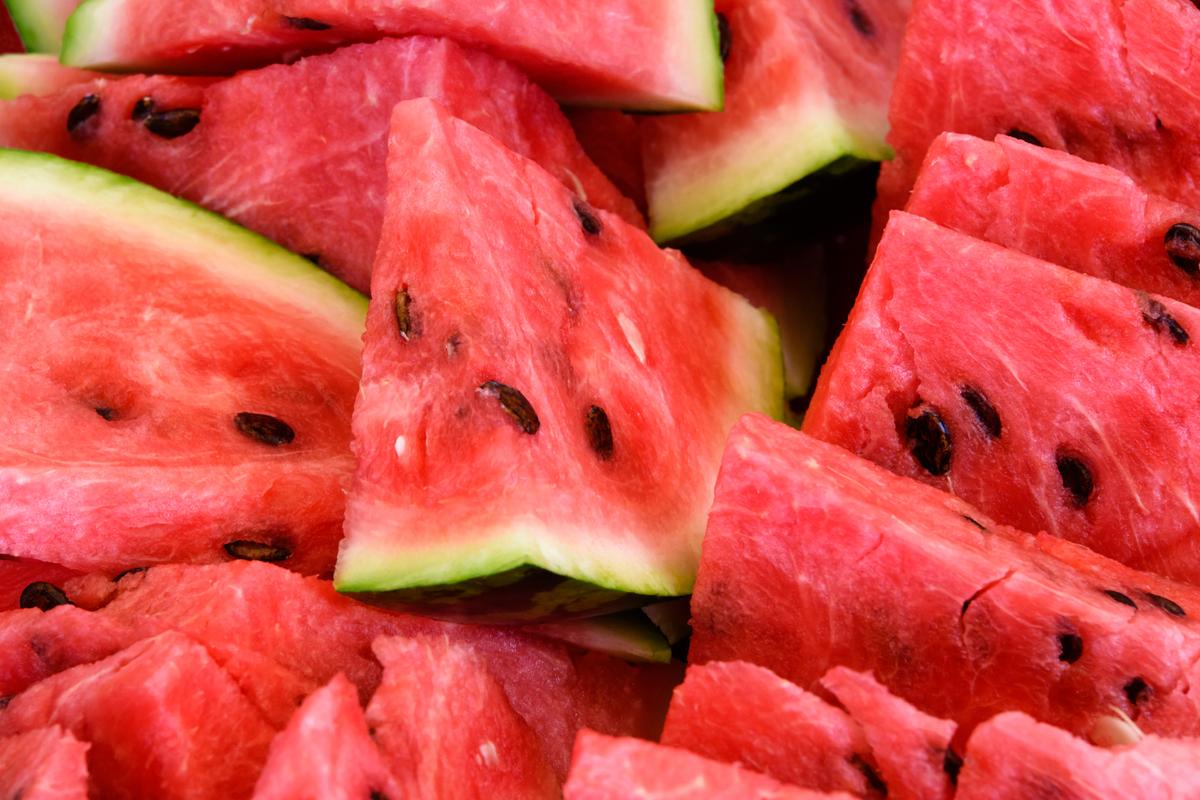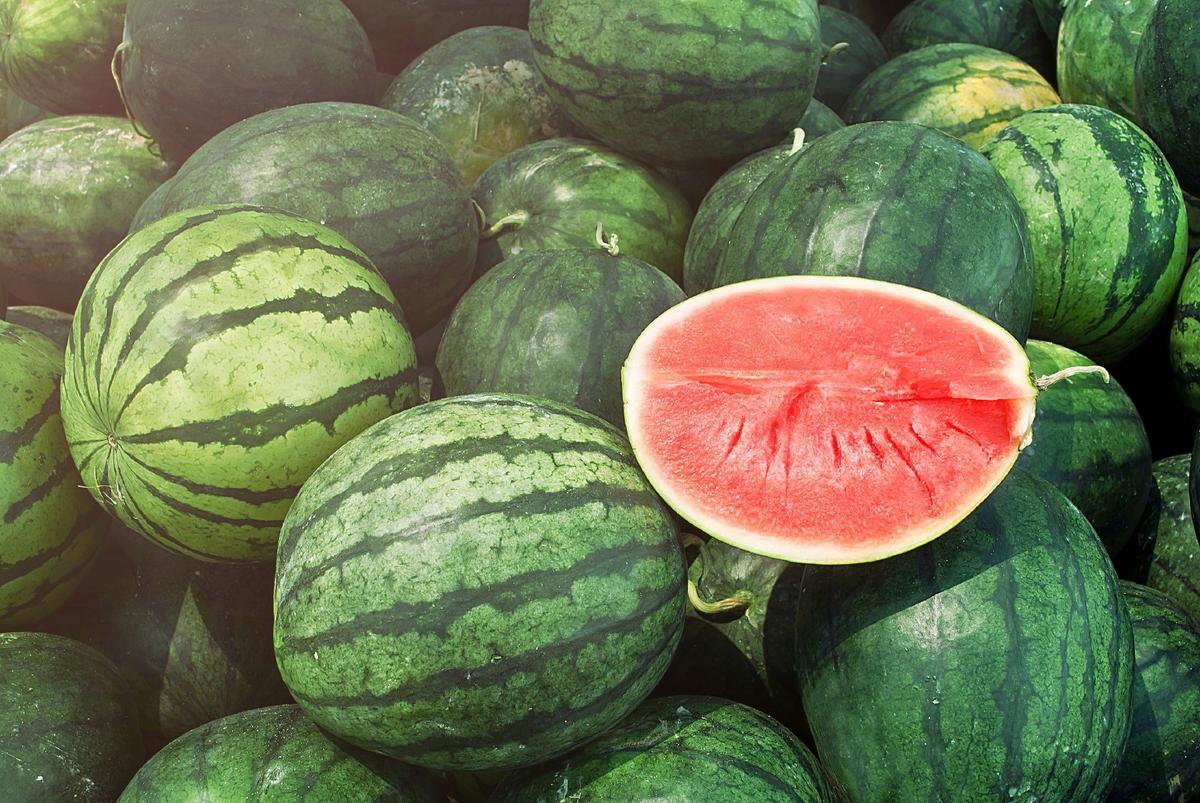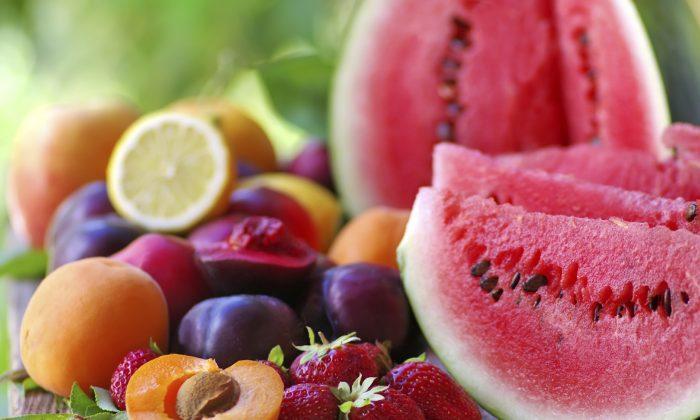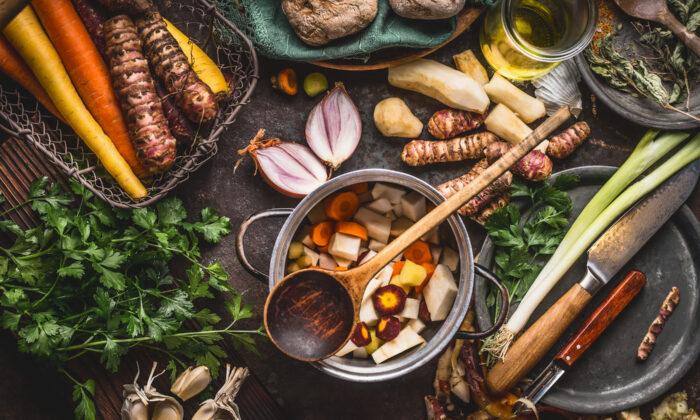Watermelons Are Good For…
Prostate health, dehydration, constipation, infection, detoxifying, kidney health, blood pressure, appetite, diabetes, and heart health all benefit (or improve) with watermelon.For various reasons, people sometimes have trouble drinking enough water each day. Watermelon, since it is 91% water, can help with hydration and electrolytes.
Watermelon hydrates our cells and balances the pH in our bodies.
Nutrition Composition of Watermelon
Watermelon is high in vitamin C (antioxidant), vitamin A (beta carotene), lycopene (antioxidant) and citrulline (an amino acid).Tomatoes are known for their lycopene, the phytonutrient famous for fighting heart disease and prostate cancer. Unlike watermelon, you have to cook tomatoes in some oil to release the lycopene. Cup for cup, watermelon has 40% more lycopene than tomatoes.

Natural Remedies and Prevention with Watermelon
Watermelon has many health benefits and can help prevent and remedy some serious ailments, from erectile dysfunction to high blood pressure.- How Watermelon Can Alleviate High Blood Pressure
- Why Watermelon Prevents Prostate Cancer
- Watermelon and Colon Health
- What Watermelon Can Do for Erectile Dysfunction
- Macular Degeneration
- Anxiety
- Skin
- Detoxification

Watermelon Seeds
Watermelon tea is used by the Amish as a healing remedy. The seeds also have properties similar to pumpkin seeds that are good for your prostate.Nutritional Composition of Watermelon Seeds
Watermelon seeds are a good source of vitamin B like Thiamin, niacin, and folate. Watermelon seeds are rich in minerals like magnesium, manganese, phosphorus, zinc, iron, potassium and copper. 100 grams of watermelon seeds provides around 139%, 87%, 82%, 74%, 44%, 20% and 37% of daily dietary values of these minerals respectively. Watermelon seeds are also a good source of dietary fiber which is essential for healthy bowel movements and digestion.What You Can Do with Watermelon Rinds
It’s much more important to make sure to purchase organic watermelon if you plan to ingest the rind.In a recent study, food scientists compared the nutrient content of flesh from different parts of a watermelon. They looked at flesh from the center, flesh near the stem, flesh near the blossom, and the flesh near the rind (known as periphery). There are concentrations of various nutrients (such as phenolic antioxidants, flavonoids, lycopene, and vitamin C) in all of the different areas tested. Overall, they found that the watermelon rind doesn’t offer any more benefit with nutrition than the flesh. The rind may have a little more citrulline than the flesh when measured by dry weight, but not by wet weight. So, if you want to eat the watermelon rind, you will receive many of the same nutritional benefits one gets eating the flesh, but the rinds also make great compost.

Watermelon Agriculture
Watermelons are a vine-like flowering plant that probably originated almost 5,000 years ago in the Kalahari Desert of Africa where botanists have found its wild ancestors still growing. Today, in the United States, in the Southern states such as the Carolinas and Georgia, watermelons flourish as commercial crops.Watermelon Varieties
There are many wild varieties ranging from super sweet to bitter that vary in size. About 200-300 varieties are grown in the U.S. and Mexico, although there are only roughly 50 popular varieties.- The ‘Carolina Cross’
- The ‘Yellow Crimson’
- The ‘Orangeglo’
- The ‘Moon and Stars’
- The ‘Cream of Saskatchewan’
- The ‘Melitopolski’
- The ‘Densuke’
Are there Genetically Modified Watermelons?
We know of no genetically modified watermelons in production. There were some experiments in Italy and the U.S., but at this time watermelons at the store as completely free of genetically modified organisms.Seedless watermelons are NOT genetically modified. They are hybrid watermelons that have been grown in the United States for more than 50 years. They are safe and delicious in every way!
Organic Vs. Conventional Watermelons
While not the worst offender, conventional watermelon is grown using pesticides known to cause health problems and kill bees. The good news is that the chemicals, for the most part, do not penetrate the rind and pass into the fruit. Watermelon is one of those fruits that you need not be too concerned with the toxicity levels if organic is not available.Seedless Vs. Seeded Watermelon
Seedless watermelons are sterile hybrid fruits created by crossing male pollen for a watermelon with a female watermelon flower. This is similar to the mule, produced by crossing a horse with a donkey. This process does not involve genetic modification.We have eaten hundreds of watermelon, and it’s getting harder and harder to find the seeded variety lately. Seedless watermelons take considerable knowledge to grow, but they ripen and are ready to harvest quickly. It’s more economical, specially on a large scale, to grow seedless watermelon.
We are the type of people to say we prefer the seeded variety for taste and texture, but the truth is, it’s actually a really tough call. The best watermelon I have ever had was seeded. But at least half in the top ten were seedless. And I’m better at picking out a good seedless melon. It’s more difficult for me with the bigger seeded varieties.
Fair-trade Watermelon & Human Rights Issues
We don’t know of any human rights issues within the watermelon industry. We also can’t recall seeing fair trade labeled watermelon. If you know of any, please let us know.Tips for Growing Your Own Watermelon
Most watermelons require a long growing season, at least three months of temperatures that are 21 – 27 degrees C (70 to 80 degrees F or higher).Start watermelon seeds indoors and use black plastic mulch.Buy seeds of an open-pollinated, heirloom variety that are a good fit for your climate (and then of course, save those seeds when you harvest the melons). If your growing season is less than 90 days, select short-season varieties such as ‘Million Bucks Hybrid’ or ‘Orange Sunshine Hybrid’.
When vines begin to ramble, a dose of boron will help melons produce sweeter flesh. Dissolve 1 tablespoon of borax in a gallon of water and spray the foliage and the ground by the plants.

Things You Didn’t Know About Watermelon
- Citrullus Lanatus is the official name for watermelons.
- Watermelons are the botanical cousins of cucumber, squash, and pumpkins.
- Watermelons earliest recorded harvest dates back to 5,000 B.C. in Egypt.
- Watermelons were buried in the tombs of kings to nourish them in the afterlife.
- The world’s heaviest watermelon weighed 121.93 kg (268.8 pounds).
- Watermelons have more lycopene than any other fruit or vegetable.
- Watermelon juice helps relieve muscle soreness and speed recovery.
- Watermelon is 91.5-percent water.
How to Store Watermelons So They Last Longer
The shelf life of a watermelon depends when the watermelon was picked and how it is stored. When properly stored, the shelf life of a watermelon past its picked or purchased date is approximately 7 to 10 days if left whole or 3 to 5 days if it is cut and in the refrigerator. Whole watermelon can last a few days longer in the fridge, but the cold temperature does diminish some nutrition.How to Pick Good Watermelons
Recent research has shown that the highest lycopene and beta-carotene content occurs at the time when a watermelon is ripe.Pick a dull looking watermelon. A shiny appearance indicates an under ripe melon.
Find the field spot. This is that creamy yellow colored spot on the melon where it rested on the ground. The darker the color of the creamy spot, the longer it was on the vine sweetening up. If it is white (or not even there), put it back, because this indicates an unripe melon that was picked too early.
Give the melon a spank. You will get a dull thud if the flesh is too soft, which you don’t want. There should be a slight hollowness to the thump. Your hand should bounce off the melon, and the surface should be pretty hard/firm, but too hard with no give can mean it’s not as ripe as it should be just yet.





